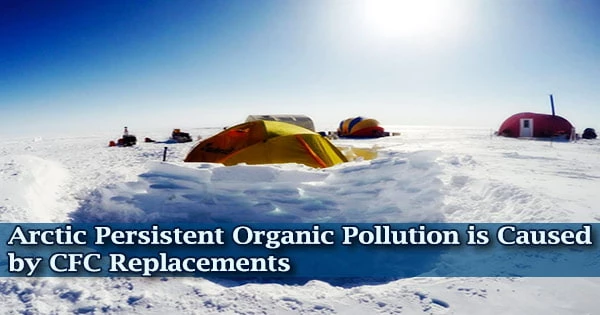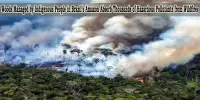According to a recent study, substances used to replace ozone-depleting chlorofluorocarbons (CFCs) can be just as harmful as their forerunners.
The Montreal Protocol, a global agreement to stop using compounds like CFCs, was put into effect in Canada in 1987. Its goal was to protect the ozone layer of the planet.
Sadly, the compounds tried to replace them with CFCs are also proving to be harmful, with rising quantities of their breakdown products recently discovered in the Canadian Arctic.
“In many ways, the degradation products from these substances may be just as concerning as the original chemical they were meant to replace,” said Alison Criscitiello, director of the Canadian Ice Core Lab (CICL), housed in the University of Alberta’s Faculty of Science. “We are seeing significant levels of these short-chain acids accumulating in the Devon Ice Cap, and this study links some of them directly to CFC replacement compounds.”
Short-chain perfluorocarboxylic acid (scPFCA) deposition increased tenfold between 1986 and 2014, according to an ice core drilled on the peak of Devon Ice Cap in the Canadian high Arctic. A number of industrial chemicals, some of which are CFC replacement compounds, are oxidized by the atmosphere to produce scPFCAs.
Due to their inability to degrade, scPFCAs are classified as “forever chemicals” and are highly mobile persistent organic pollutants. These compounds are poisonous to plants and invertebrates, according to a few preliminary studies.
In many ways, the degradation products from these substances may be just as concerning as the original chemical they were meant to replace. We are seeing significant levels of these short-chain acids accumulating in the Devon Ice Cap, and this study links some of them directly to CFC replacement compounds.
Alison Criscitiello
“This is the first multi-decadal temporal record of scPFCA deposition in the Arctic,” explained Criscitiello. “Our results suggest that the CFC-replacement compounds mandated by the Montreal Protocol are the dominant source of some scPFCAs to remote regions.”
Criscitiello and associates have collected four ice cores from the eastern Canadian high Arctic during the previous four years. This interdisciplinary effort would not have been possible without the close cooperation between Criscitiello’s lab and those of atmospheric chemist Cora Young of York University and research scientist Amila De Silva of Environment and Climate Change Canada.
Perfluoroalkyl acids (PFAAs) are also present in considerable amounts in these same Canadian Arctic ice cores. These findings show that, in spite of North American and worldwide laws and phase-outs, both perfluoroalkyl carboxylic acids (PFCAs) and perfluorooctane sulfonate (PFOS) have ongoing and rising deposition on the Devon Ice Cap.
This is most likely due to the continued production, use, and emissions in non-North American regions of these persistent pollutants, as well as their precursors and other novel chemicals.
“These results show the need for a more holistic approach when deciding to ban and replace chemical compounds,” explained Criscitiello. “Chemicals degrade, and developing a strong understanding of how they degrade in the environment, and what they degrade to, is vital.”
















